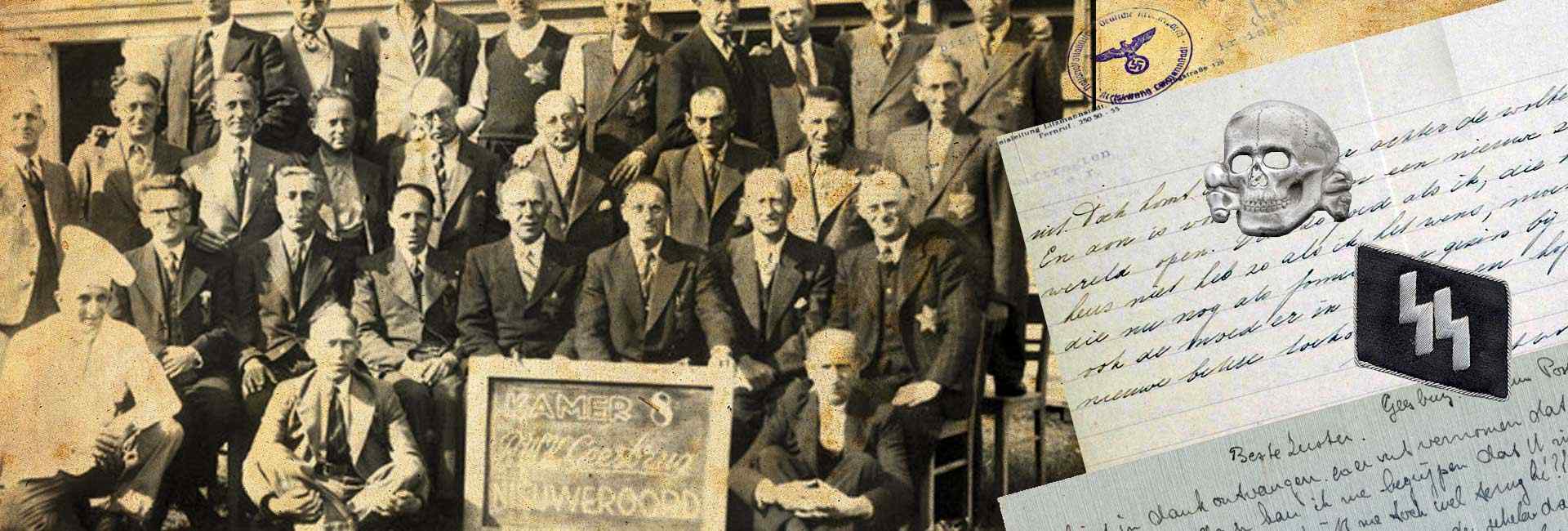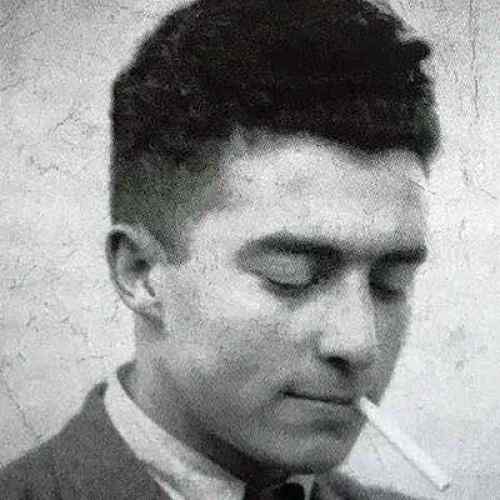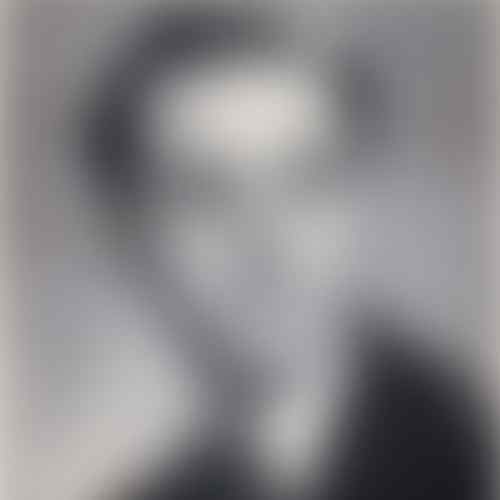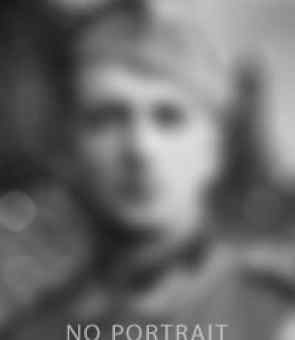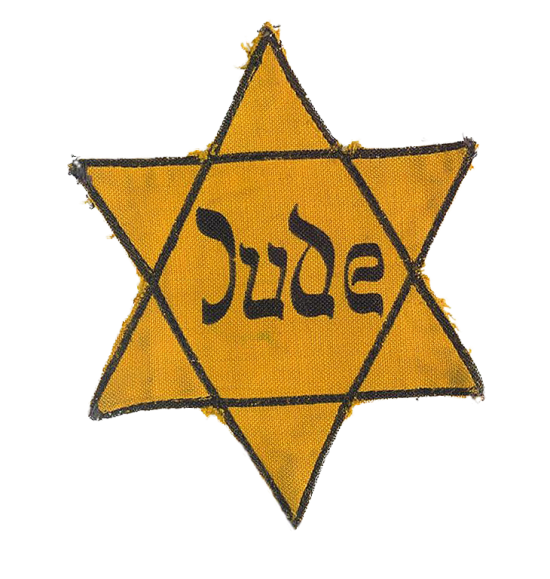
Over the years, different groups of people have lived in the Geesbrug camp. Initially, the camp was intended for the D.U.W. (Works Execution Service). Before the Second World War, it was mainly unemployed people from The Hague who had to work here as part of the creation of employment, for example in mining. But this soon changed with the outbreak of the war.
"For evil to flourish, it only requires good men to do nothing".
Simon Wiesenthal
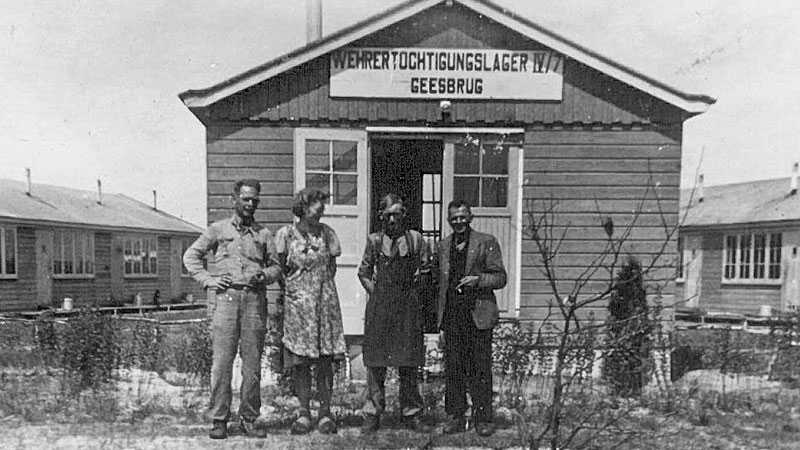
Kamp Geesbrug barracks
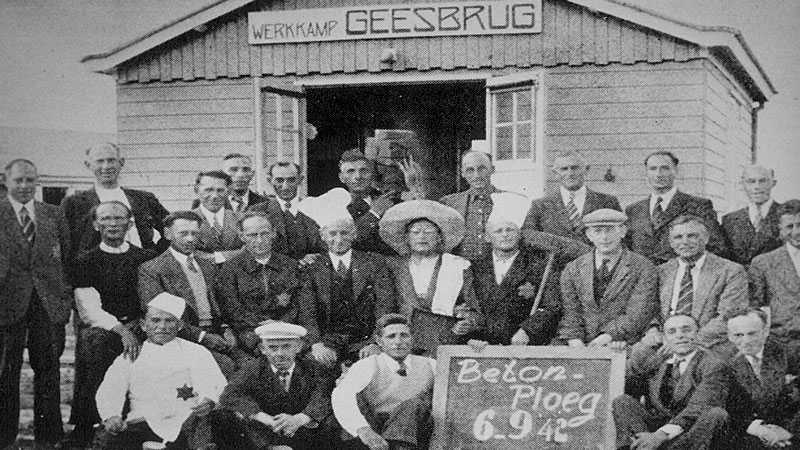
Kamp Geesbrug forced labor
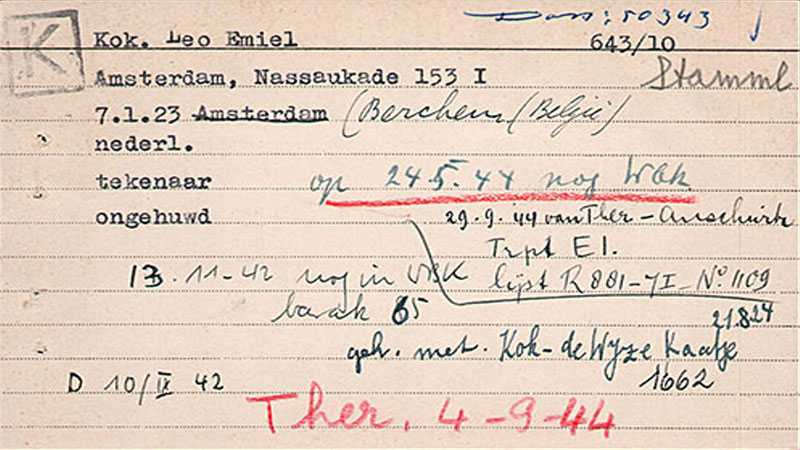
Deporation card of Leo Kok
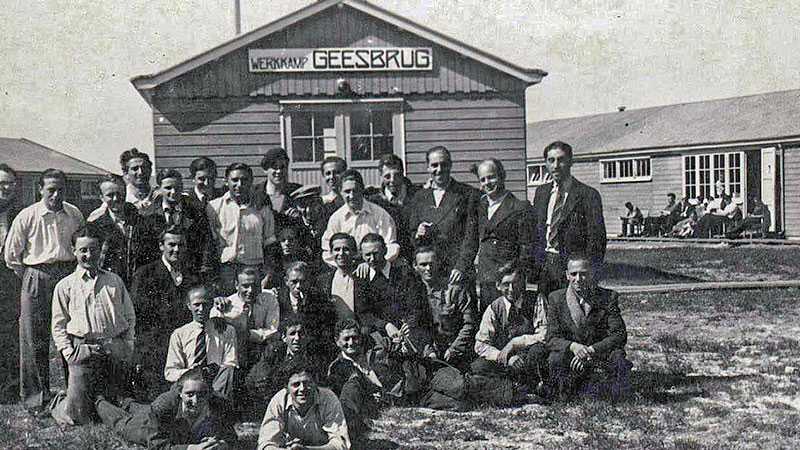
The last inhabitants were Moluccans and Ambonese people
History, definition and facts about Workcamp Geesbrug
Camp Geesbrug (Nieuweroord) was located just west of the village of Geesbrug, on the road to Hoogeveen and the Hoogeveense Vaart. About the origins of the labor camp little is known. Probably the camp was built in early 1941. Neither is clear when the first Jewish forced laborers arrived. Geesbrug
had a capacity of 240 people, and at the begining of 1942 about 210 Jewish men imprisoned.
Camp life
The Jewish forced laborers were subdued others used for mining and agricultural construction work. The so-called 'concrete crew' laid the concrete shelter in a drainage ditch of the Coevorden-Zwinderen canal, the Miljoenensloot on the Vossebelt.
The days in the camp started with an early rise. Every day was the same. Followed by marching in rows for about 25 minutes till the prisoners arrived at their work location. They had to dig trenches. Two meters deep and two meters wide. Watched and controlled by our supervisor, mister de Vries, who had a large German Shepperd dog at his side.
Prisoner Joseph Pronkhorst
On May 20, 1942, Joseph Pronkhorst, who worked as a putter, wrote: 'There is no question of leave for the time being, although we have been here for almost 7 weeks.' He did receive visitors in the following days and he was allowed to call his mother once.
On Thursday, June 25, 1942, Joseph wrote another letter: 'I have not seen a potato in the camp since Monday. However, we make sure that we do have something to eat. The farmers are very cooperative. Simon, as you write, there is a chance that you will also have to be examined. I just hope that's not the case. Although I already know that about 40 people from The Hague and Rotterdam will come to our camp.'
Deportation
In the night of 2 to 3 October 1942, the Jewish men were transported by train to camp Westerbork and from there to German extermination camps. Few survived these deportations. Less than a week later, most of them were murdered in the gas chambers of Auschwitz - Birkenau and Sobibor.
Other functions of the camp
After the departure of the group of Jewish forced labourers, the camp served as a shelter for evacuees, who had had to leave their homes because of the construction of the Atlantic Wall. Subsequently, the camp was used as accommodation for workers from the Labor Service.
Hitlerjugend
Also the Hitlerjugend, stayed in the Geesbrug camp and were trained as soldiers. These so called 'Wehrertüchtigungslager' or defense training camps (WE camps for short), also Reich training camps, were Hitler Youth facilities for pre-military training and indoctrination during WW2. Within the Reich Youth Leadership of the Hitler Youth there was an office for physical training. From 1939 onwards, this organized several weeks of training courses in camps for military training, in which young people were to be prepared “pre-military” for use in the war.
After the war
After the war, the camp served as a shelter for a group of soldiers who helped with harvesting activities, as a holiday colony and as accommodation for conscientious objectors. The last inhabitants were Moluccans and Ambonese people . The camp became vacant and was put up for sale. A pig farmer later demolished the barracks and built new barns for his pigs on the foundations.
Monument
A monument now stands ate the site where the camp was. The placement of the monument was an initiative of the working group Jewish Monument Geesbrug. The monument was unveiled on 2 October 2008 by chief rabbi Binjomin Jacobs and Maurits Buitekant, who managed to escape the Geesbrug camp and go into hiding in The Hague. In the presence of relatives of the Jewish men who were in the labor camp at the time.
A big thank you to: Gemeentearchief Oosterhesselen 1920-1997 for their coorperation.
Notable inmates
The camp specifications
May 1942 - 1958
240
Zero
"None of us who entered the camp had any warning what so ever of what we were about to see".
